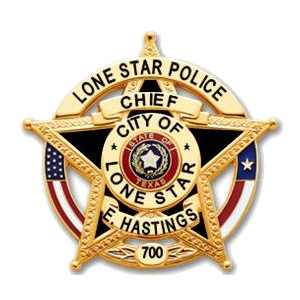 |
| LONE STAR POLICE DEPARTMENT |
| Policy 8.6 Active Shooter Response |
| Effective Date: 25-SEP-2024 |
| _______________________________________________________ Ernest Hastings, Chief of Police |
I. POLICY
An active shooter is defined as one or more subjects who participate in a random or systematic homicidal spree by demonstrating their intent to continuously harm others. The subject's overriding objective appears to be mass murder rather than other criminal conduct, such as robbery or kidnapping.
It is the policy of this agency to respond, contain, and stop the threats and to administer aid to the victims.
II. PURPOSE
To establish policy and procedures governing the response and activities associated with an active-shooter event that will mitigate any further risk of injury or death to civilian or law enforcement personnel.
III. PROCEDURES
- Notifications: The officer will instruct dispatch to notify the Chief of Police or his/her designee of any active shooter event. Fire and EMS should be notified and requested to stand by in accordance with their protocols.
- Mutual Aid: Upon arriving at the scene of an active shooter event and after assessing the crime scene, the agency should implement its mutual aid agreements with other police agencies if necessary, and with fire and rescue agencies. Additionally, it may be necessary after the incident to collaborate with recovery agencies to assist with the scene and any victims.
IV. ACTIVE SHOOTER RESPONSE
The first two to five responding officers should form a single team and enter the structure. (A single officer entering a structure must understand the inherent risk assumed in taking such an action.) The first officers entering the structure should recognize that their primary objective is to stop further violence. Officers should identify and communicate locations of victims needing medical attention. If practical, and absent continued shooting, officers should treat any massive hemorrhaging that may result in the immediate loss of life.
- Concepts and Principles: Safe, effective responses to active shooters are designed around concepts and principles. The first responding officers should:
- Stay together as much as possible and enter the involved structure quickly.
- Maximize communication by staying in close contact with other first responders.
- Maximize threat coverage by addressing all angles.
- Visually search involved areas using 540 degrees of coverage around and above the team.
- Evaluate rooms from the threshold (commonly referred to as slicing the pie).
- Differentiate between deliberate and direct-to-threat speeds and use the appropriate speed for the circumstances.
- Use cover-contact principles when taking suspects into custody.
- Follow-On Responders: Follow-on responders should be directed to victim locations if there is no active threat. Follow-on responders should:
- Establish and maintain security in the area that follow-on responders occupy.
- Consider the involved structure as unsearched.
- Not enter a hallway unannounced if it is occupied by other officers.
- Unless what other officers want accomplished is very clear, move to them after notifications and conduct a face-to-face meeting.
- Direct victims to safety by utilizing either shelter-in-place or evacuation. If evacuating, establish a cordon of first responders to the desired exit point to ensure safety of victims.
- Establish a casualty collection point (CCP) for injured persons. The CCP should be a room or open area (if outside of the structure) capable of holding all victims with injuries that require medical treatment. A series of rooms next to each other can be considered if casualties exceed available space.
- Communicate with all involved responders to ensure the area remains secure while facilitating victim treatment.
- Post-Event: Responses to an active-shooter event must include the aftermath of the incident. Officers should apply the SIM model (Security / Immediate Action Plan / Medical).
- Security should take priority. Responding officers must ensure that the immediate environment they are working in remains secure, particularly if the active shooter remains a threat.
- After officers address known threats, they should formulate an immediate action plan as quickly as possible. This plan should be quick and simple and address: "if / then" – the fluid variables of the situation.
- Responding officers should address medical issues as soon as they establish security and have an immediate action plan in place.
- OIS Investigations: Should there be an exchange of gunfire the agency will implement its officer-involved-shooting policy and respond accordingly.
V. Media Inquiry
All requests for information should be funneled through the public information officer (PIO) or the incident commander (IC) for vetting and coordination. Consideration should be given to establishing a media staging location that is not within the immediate vicinity of the active-shooter event.
Previous page: Department Policies